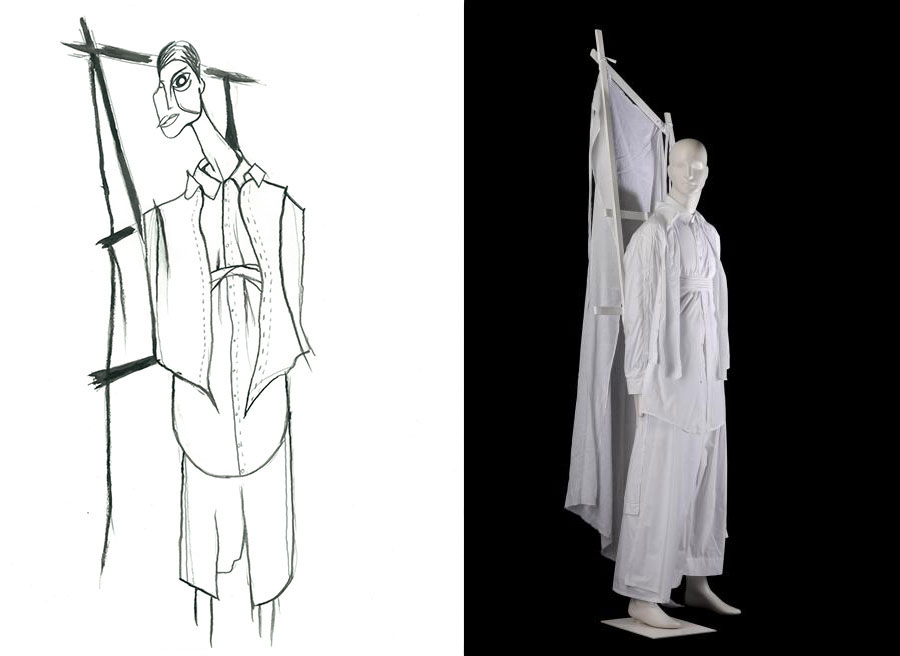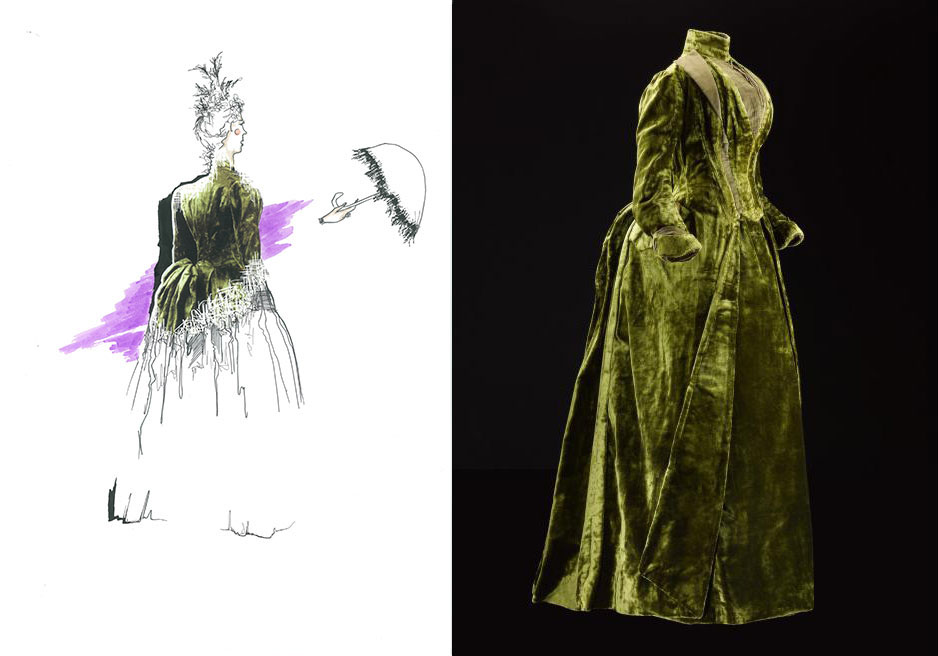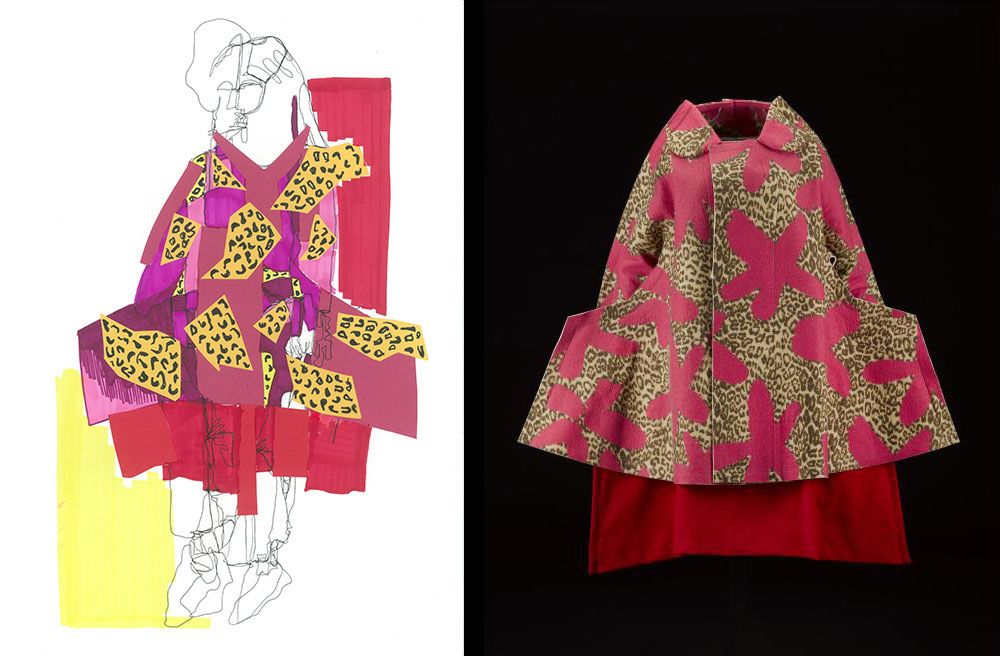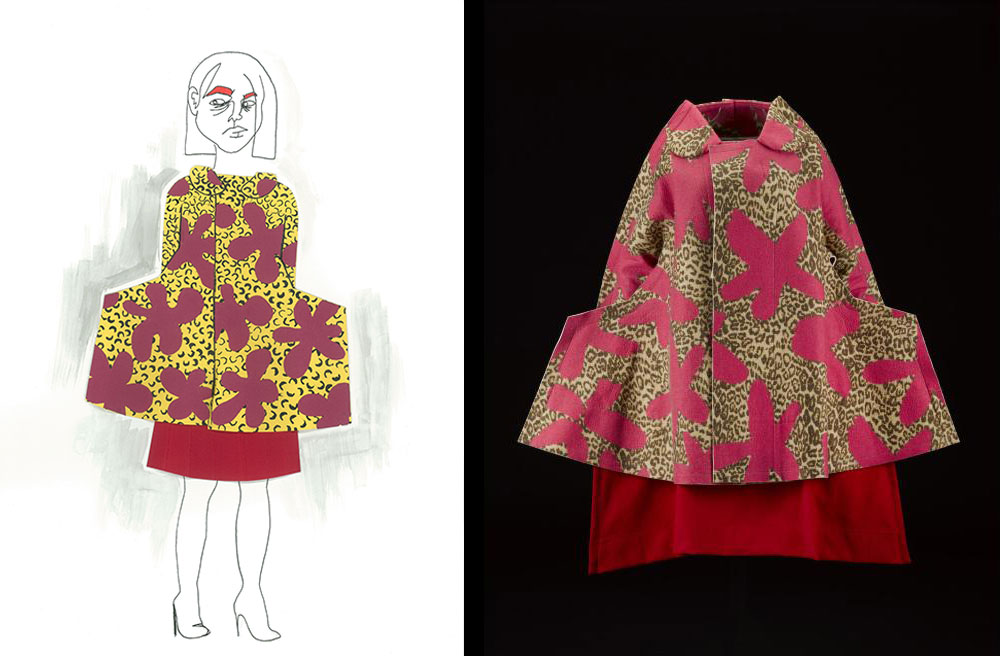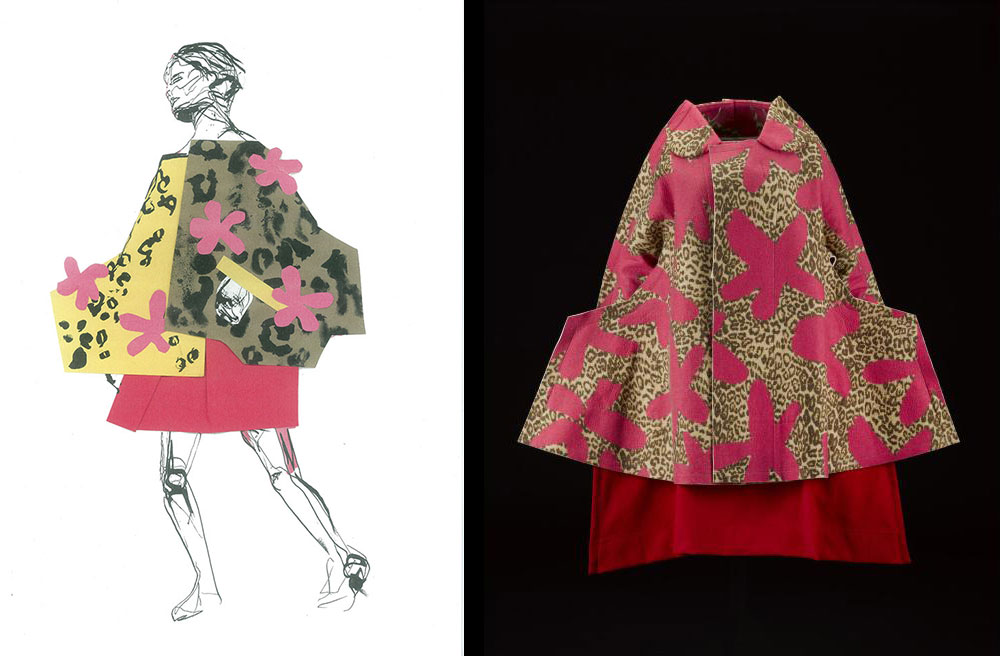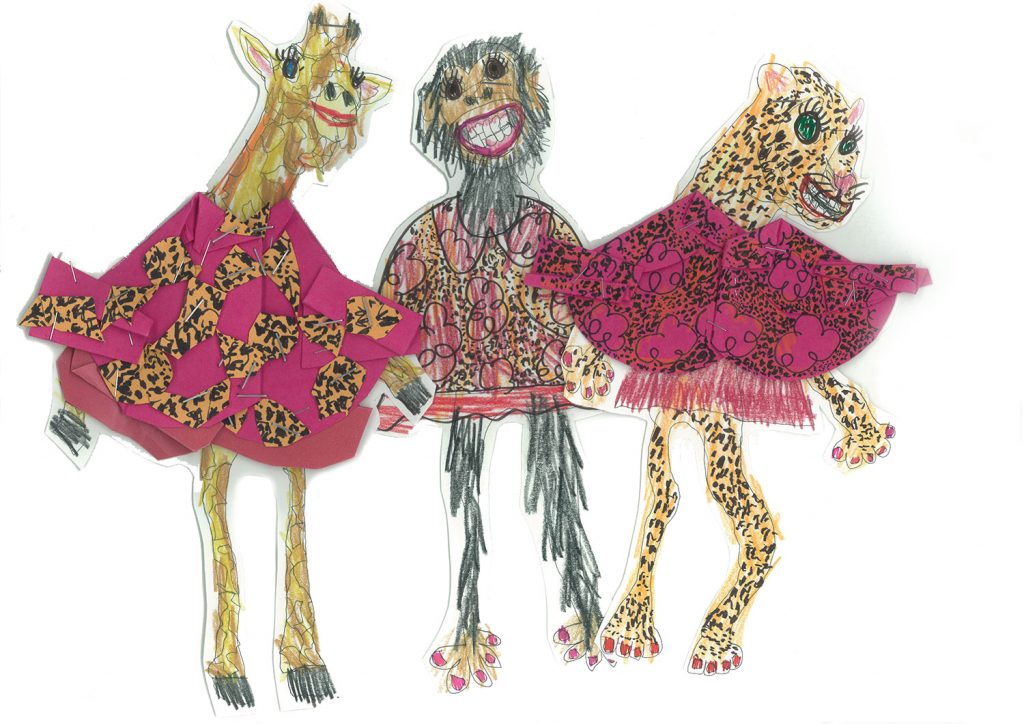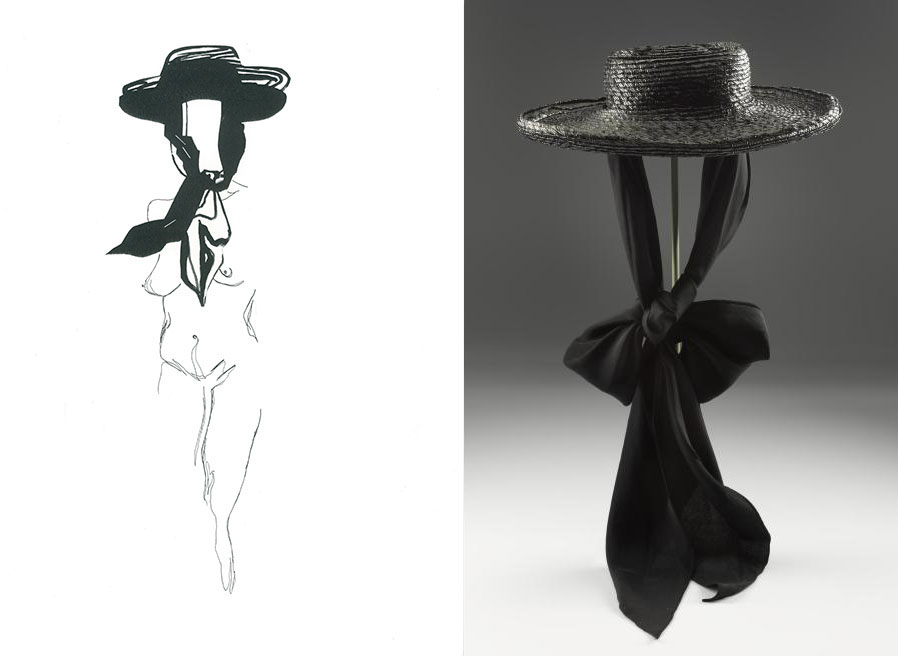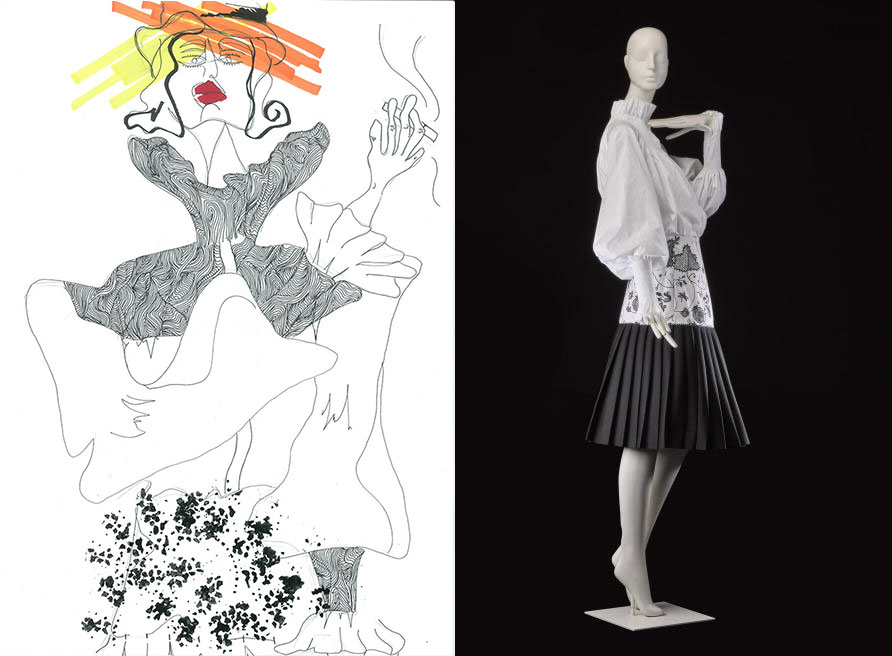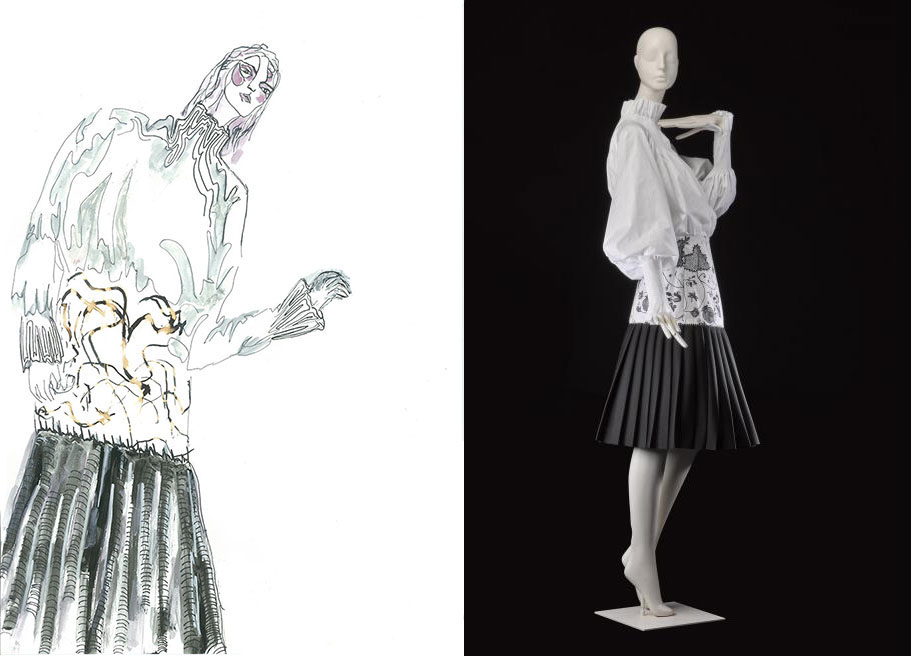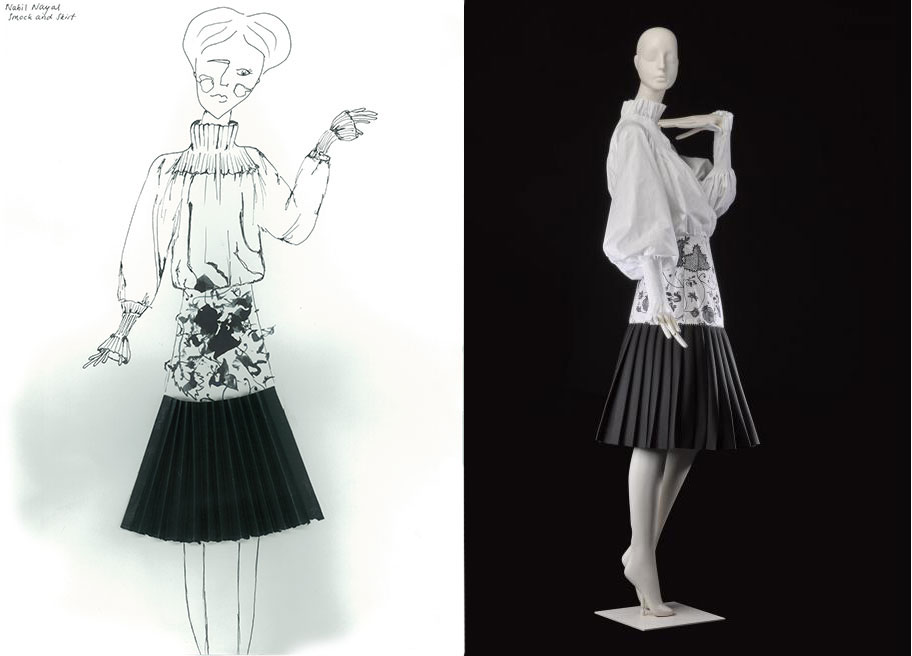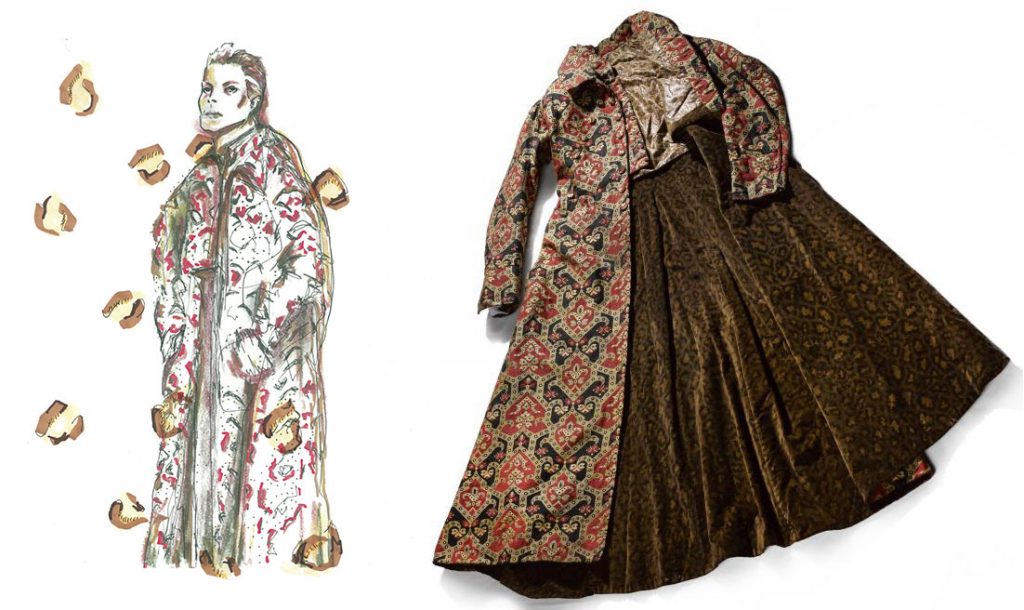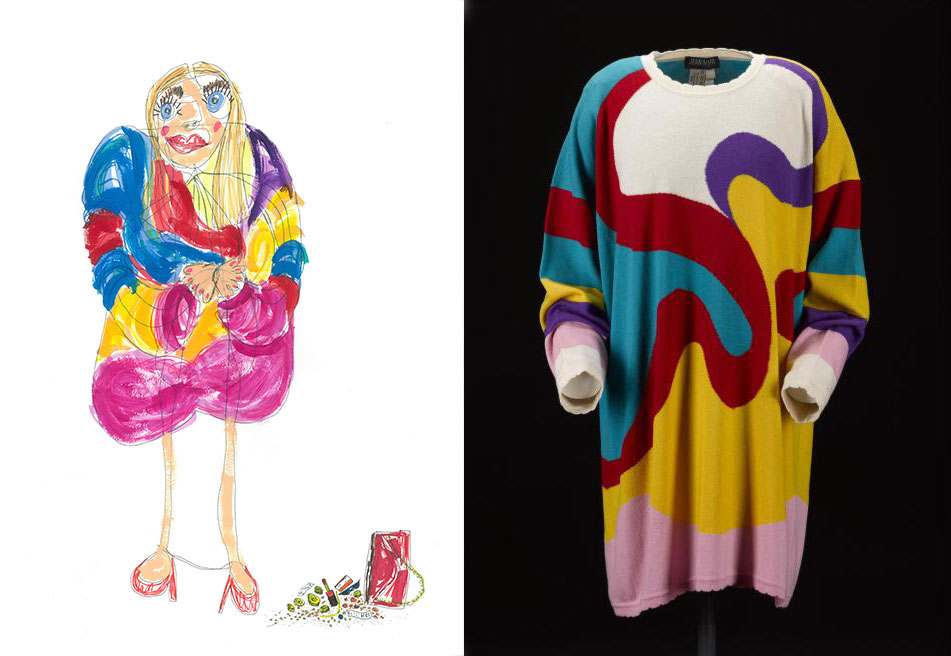This autumn, National Museums Scotland welcomed students from the Fashion BA (Hons) programme at Edinburgh College of Art as part of a fashion illustration project.
The project was set up by Emily Ford-Halliday, a Lecturer in Fashion at Edinburgh College of Art, and Georgina Ripley, Senior Curator of Modern and Contemporary Fashion and Textiles at National Museums Scotland. The students were invited to respond to garments on display in the Fashion and Style gallery through sketching, mark-making, illustration and collage. The participants were tasked with selecting three garments from the gallery, researching their historical context and creating an original illustration. You can read more about the student’s experience and design process here.
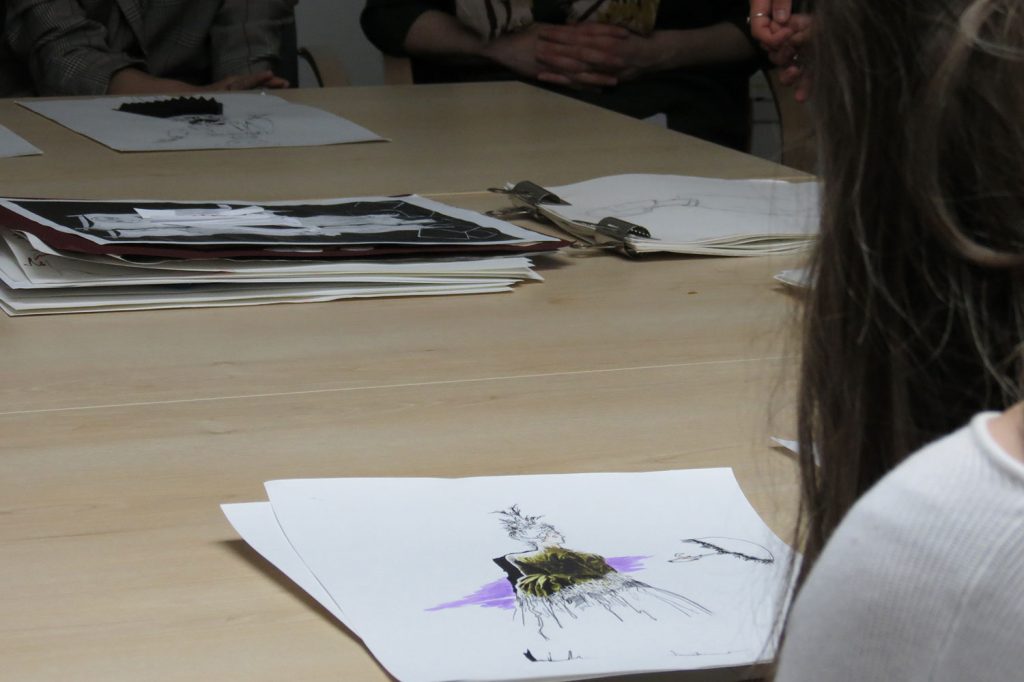
Representatives from Edinburgh College of Art and National Museums Scotland selected three winning illustrations from the project, which proved to be a difficult task as the standard of work was extremely high.
The three pieces chosen were by Katie Griffith Morgan, Skye Bending, and Delores Zhou.

Katie chose an iconic dress by Rei Kawakubo for Comme des Garçons, which is padded with tulle and can be manipulated on the body to achieve a variety of silhouettes. Katie commented, “I was initially attracted to the look of the garment – the form, the folds and the crumples – that I thought would be interesting to draw. It was the first thing I wanted to draw when I came into the gallery.” Katie added, “Kawakubo’s collection was distancing itself from what, stereotypically, is ‘feminine’, and it’s manipulating the silhouette of the body.”
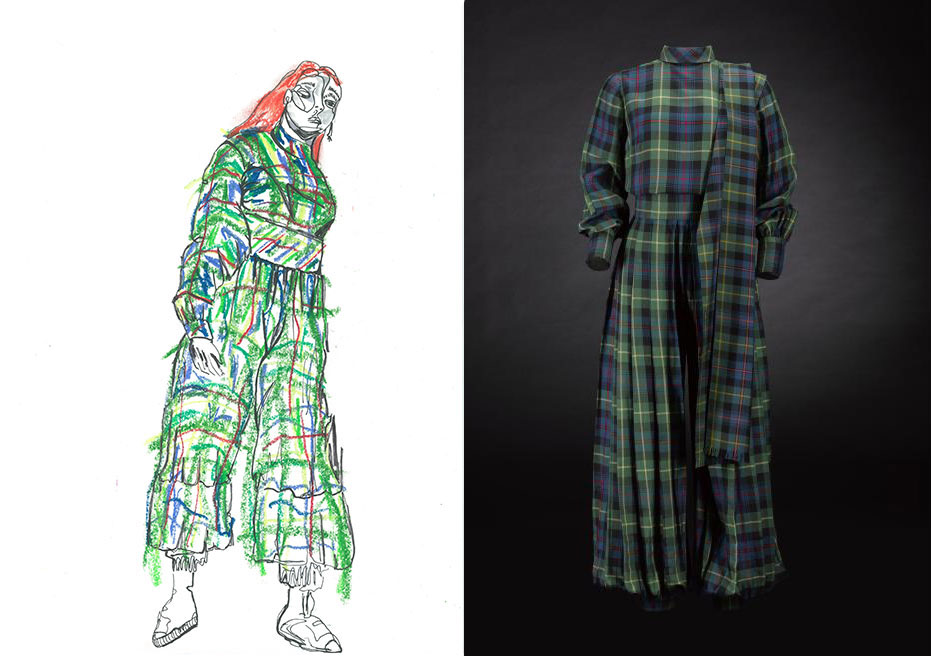
Skye was inspired by the story behind the garment; this ensemble, featuring Turkish trousers and a top in the Farquharson tartan, was owned by Frances Strickland Lovell Oldham, who was a fashion editor for Vogue and Harper’s Bazaar before marrying the clan leader of Invercauld. “I imagined her drenched in this tartan from head to toe. I thought of her as a really proud lady, and I liked the idea of knowing the character who I was portraying,” she said, “I found it difficult to capture the thickness of the material and the pattern at first. But we did a pattern and textural tutorial, which helped me to use other techniques to represent the weight of the fabric more.”
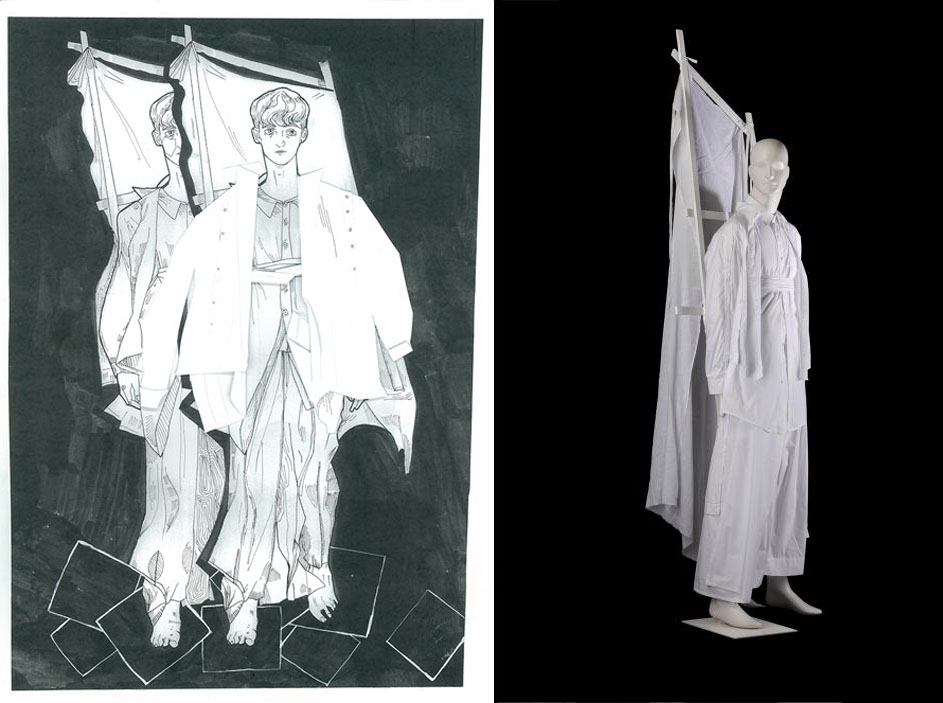
Delores was drawn to the challenge of illustrating something that was just white with no additional colour and selected ‘Sculpture look’ by British designer Craig Green. “The workshops helped me a lot, particularly the one on collage, because before that I had only explored drawing by hand,” said Delores. “After that, I used the collage technique, and ended up with something that’s more 3D and brings the garment to life.”
All of the participants responded to the Fashion and Style gallery in very personal and imaginative ways and really brought the garments to life. You can view a selection of their work below.
